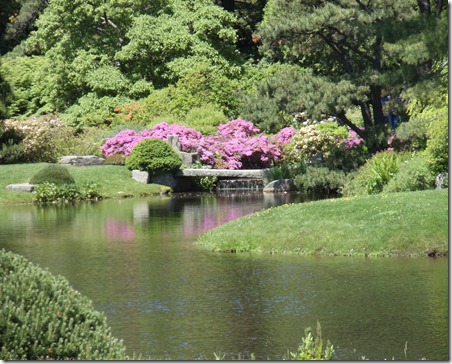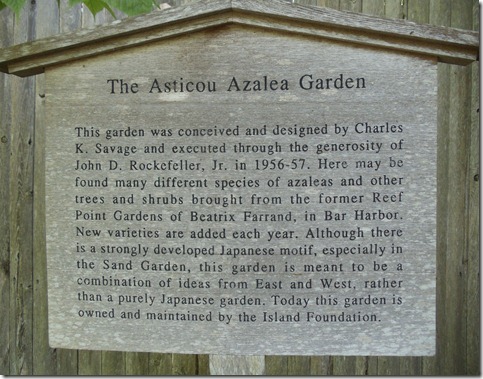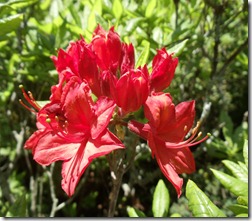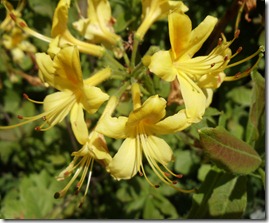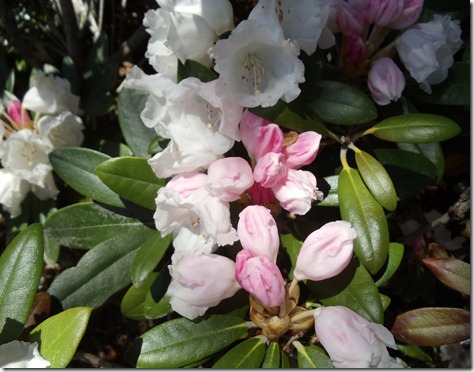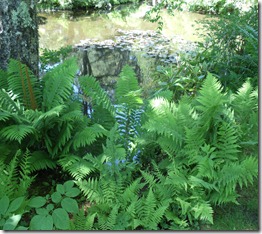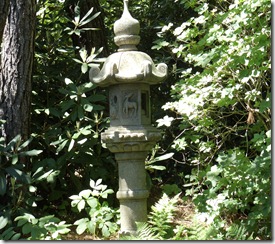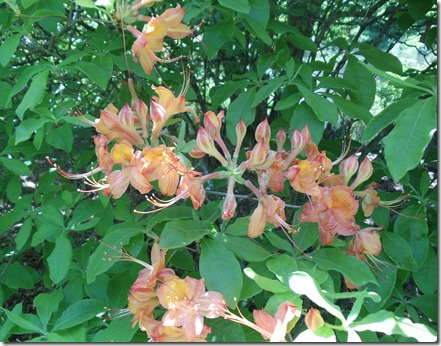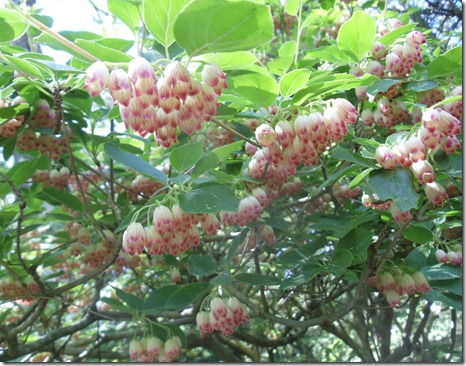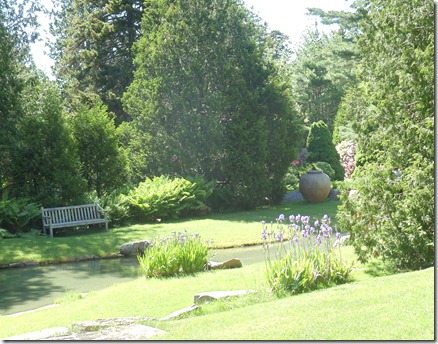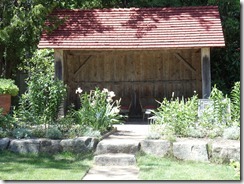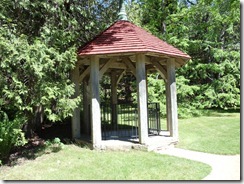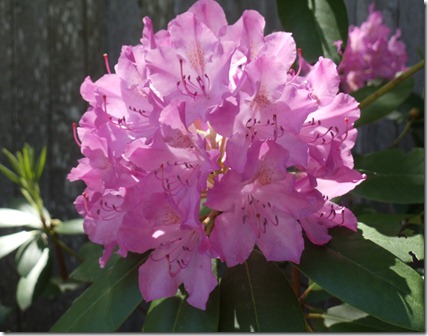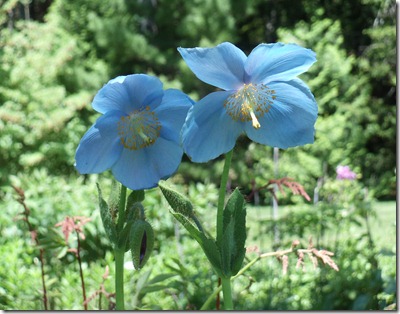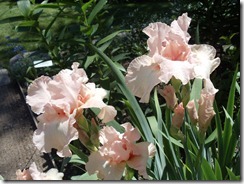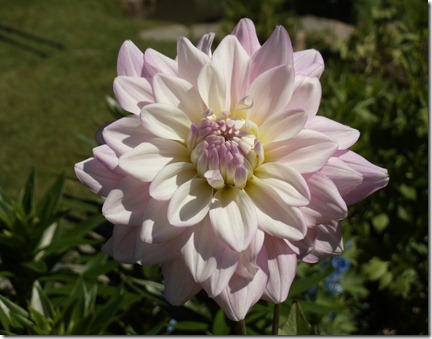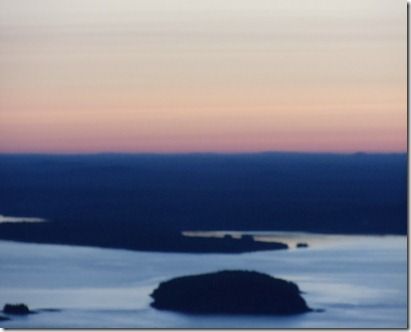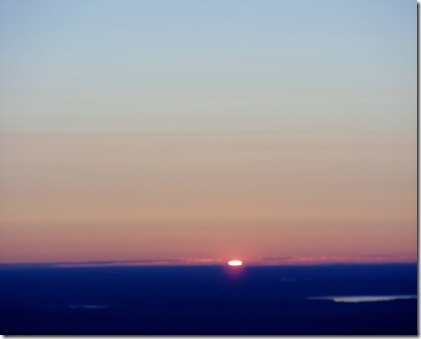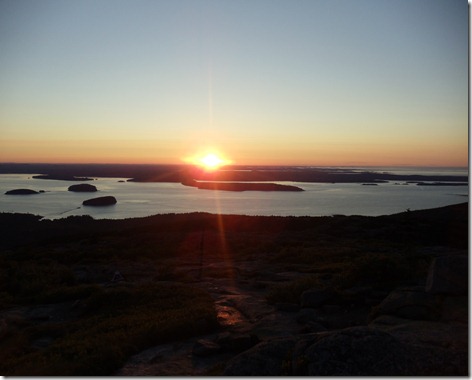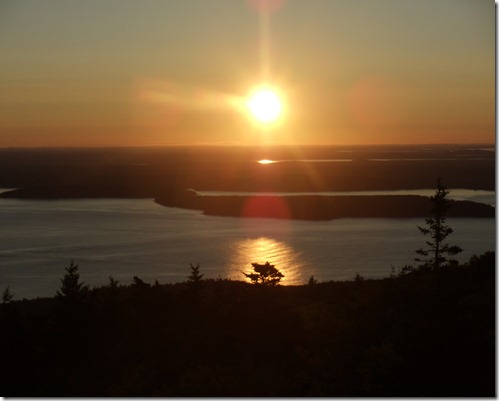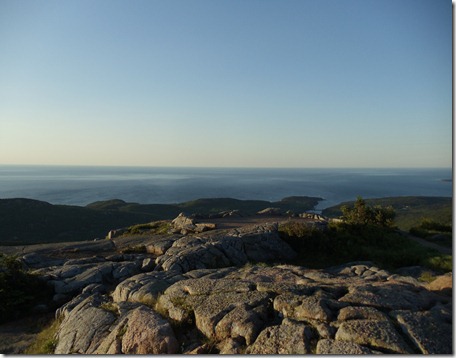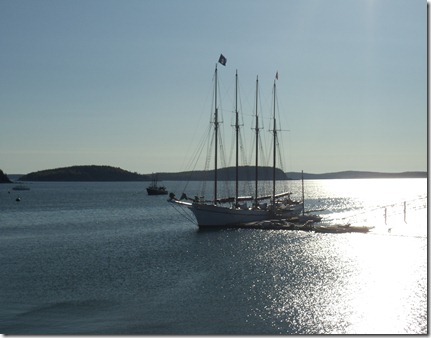We did a lot of our exploring of Acadia National Park on the carriage roads. These roads were built by John D. Rockefeller, Jr. from 1917 – 1940, to provide recreation on Mt. Desert Island for the summer “Cottagers” and in order to protect his idyllic summer island getaway form the encroachment of the automobile. Rockefeller personally oversaw the design of the carriage road system, and chose the route of the roads to highlight the natural beauty of the area. When Acadia NP was formed (the first National Park east of the Mississippi) Rockefeller donated to the park. 11,000 acres of his property and 51 miles of carriage roads.
These carriage roads were always intended to be for people to enjoy at the slower pace of horses and carriage or on foot. And that is how we explored them – 15 miles over 3 days of hiking, and another 5 miles on a carriage ride.

At two of the entrances to the carriage road system, stand gatehouses that were built to ensure that the carriage roads should remain separate from the motor roads.
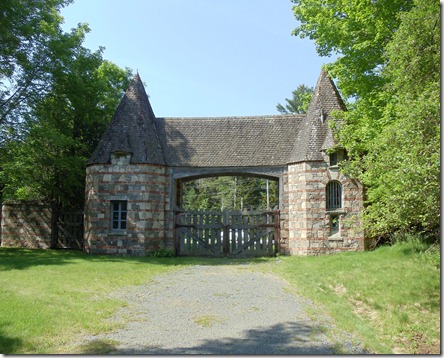
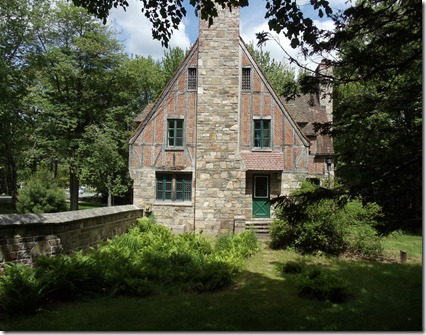
In building the carriage roads, Rockefeller went to great lengths to make them attractive, as well as seeing that they presented the user with scenic views. The roads were well constructed with three layers of rock, topped with a fine gravel. Along the edges are granite coping stones, to provide a natural guard rail. After construction, the landscape gardener, Beatrix Farrand worked on roadside plantings to hide any unattractive scarring.
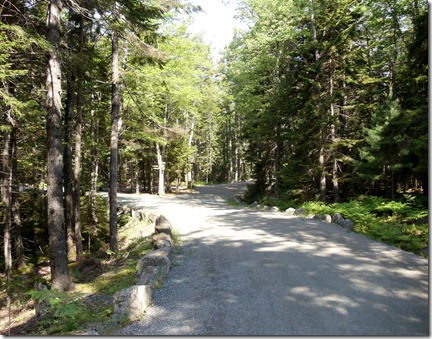
The road system was designed to provide different loops that one could travel to various destinations. At the intersections of these roads, Rockefeller placed signs designating to which destination the road led, but, believing that the journey is more important than the destination, he did not list mileages nor did he indicate which was the shorter route. Thank goodness we had a detailed map and road guide!
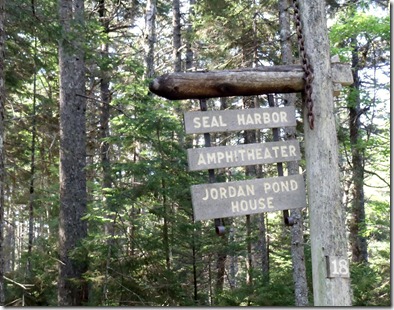
The carriage road system covers much of the scenic area of Acadia and crosses many brooks and streams, which necessitated the building of bridges. Here, Rockefeller’s aesthetic genius was at its best. Rockefeller oversaw the building of 16 uniquely designed stone bridges, each using native materials such as pink or grey granite to blend in with its surrounding landscape.
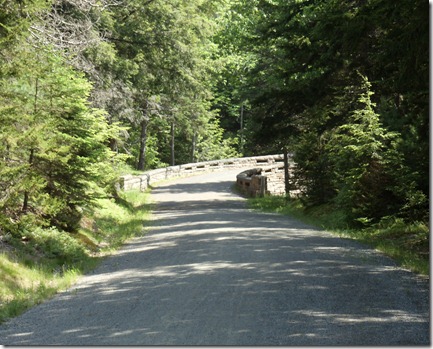
Thought was given to shape…..why use a straight line when a curve is so much nicer…..
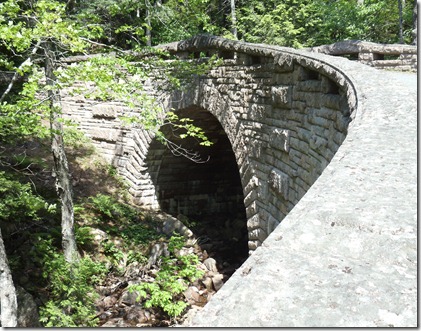
Each bridge had steps or a path that beckoned one down to view the bridge from beneath.
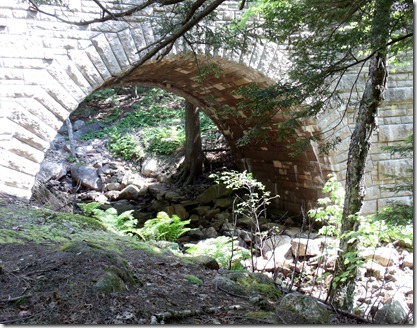
These stone bridges had a fairy tale quality……
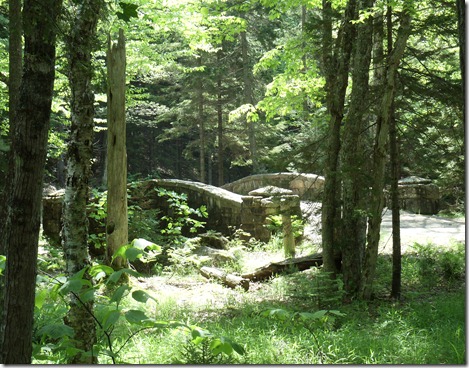
Softly set in the woodlands…..

And each framing an almost whimsical view…..
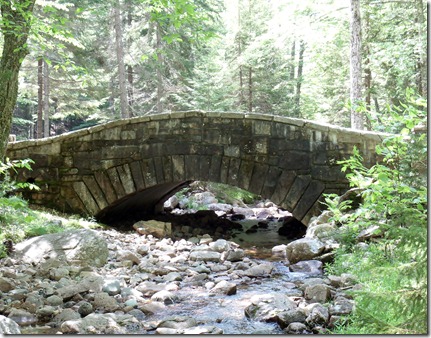
Rockefeller included on the bridges many details that were simply aesthetic – rounded cap ends …..or turn-outs where one could look out over the stream, each set with a particular view in mind.
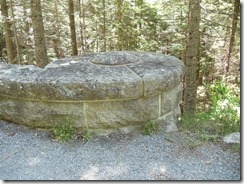
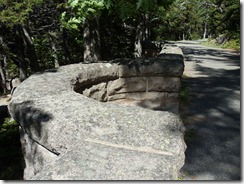
Some bridges had more gothic treatments, others, more natural…..
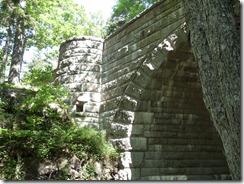
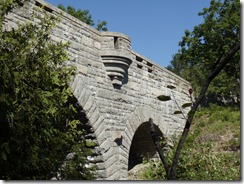
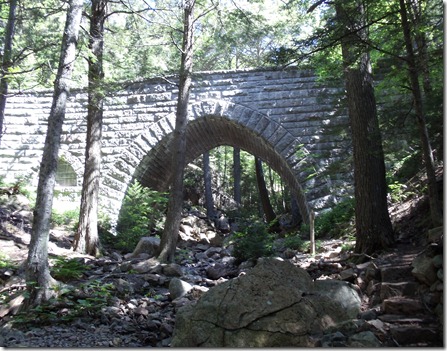
This cobblestone bridge was the first bridge constructed - it took 4 years to complete, and then some said it was ugly. It is the only cobblestone bridge that Rockefeller built.

Each bridge but one, has a date stone…..but, I think Rockefeller liked puzzles, because each date is set in a different location on each of the bridges, and each is done with a different font style.
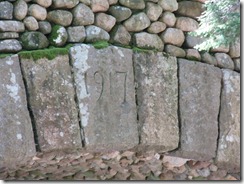

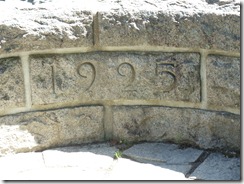
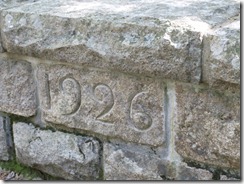
There are two triple arched bridges in the park. These arches allow for the trail system on either side of the road or creek that is spanned to continue to be used unimpeded.
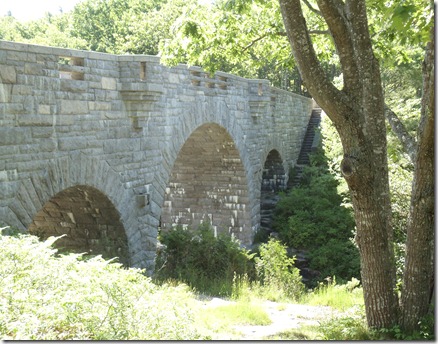
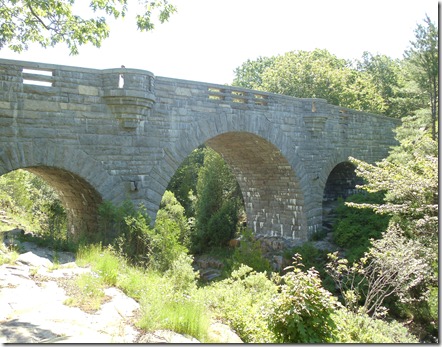
Walking the carriage roads was pure joy……easy footing, nice gradual inclines,,,,,and beautiful! Like strolling a country road…where around every turn was a new discovery…..
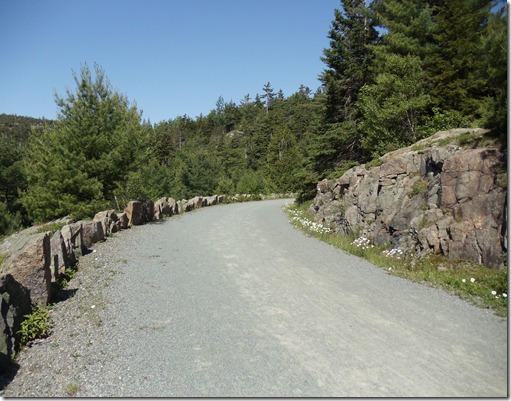
A beautiful vista…….
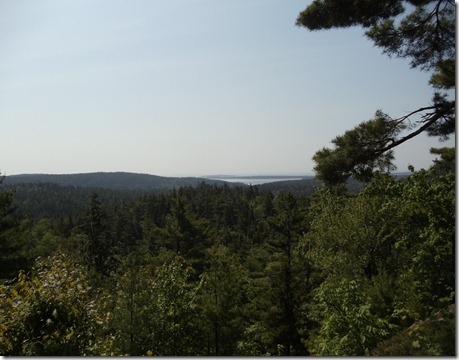
A woodland stream……
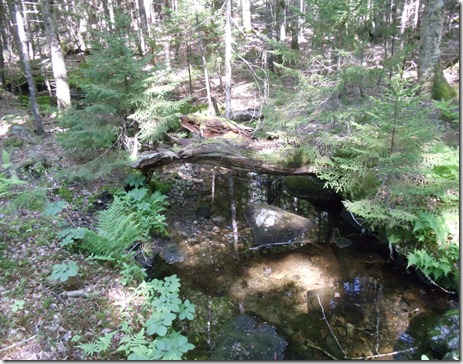
a secluded pond…….
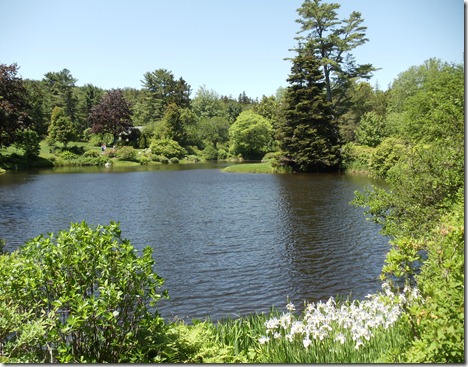
Or bog…..
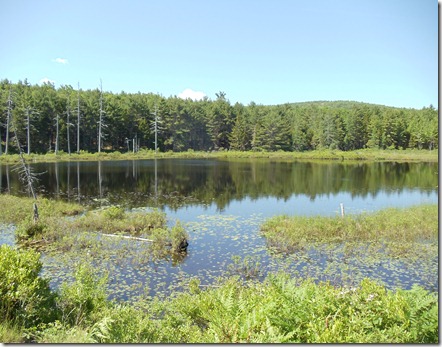
Beautiful flowers…..
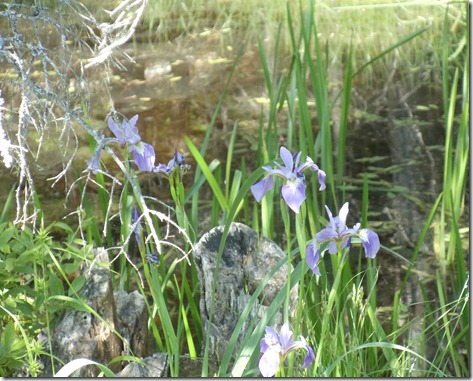
Even, if you are quiet, a deer…..

